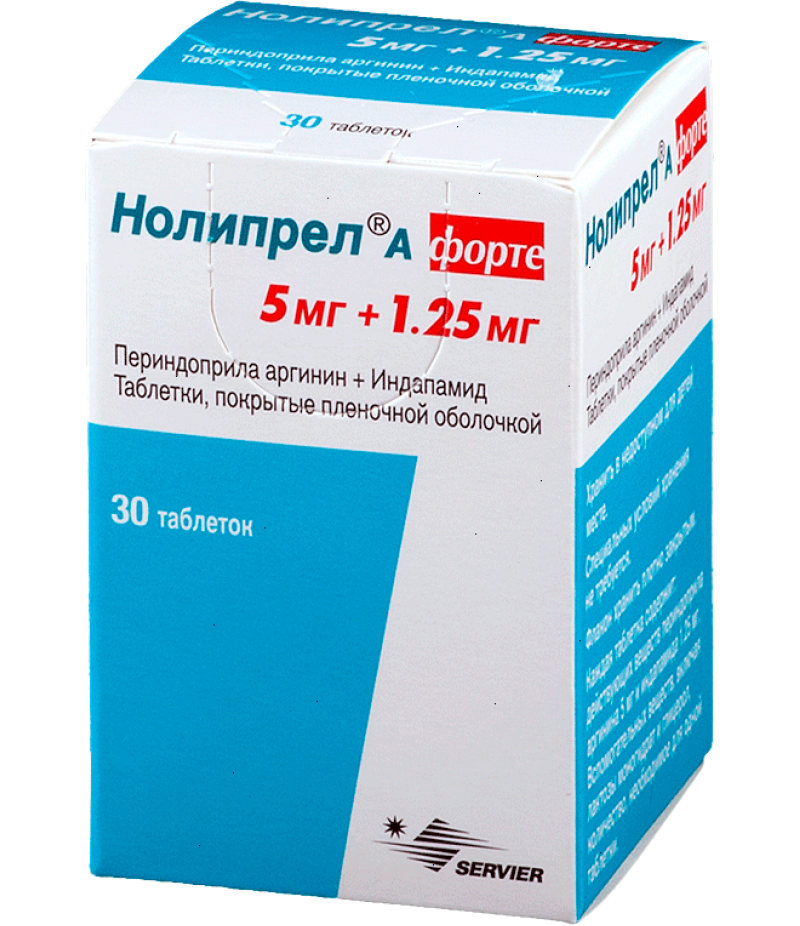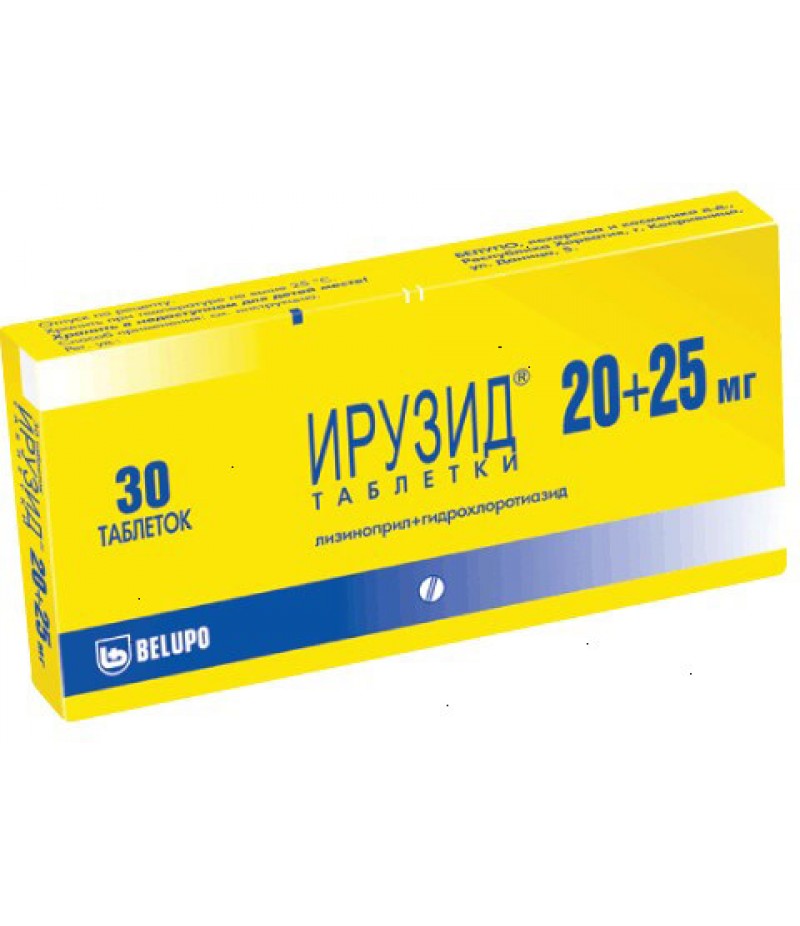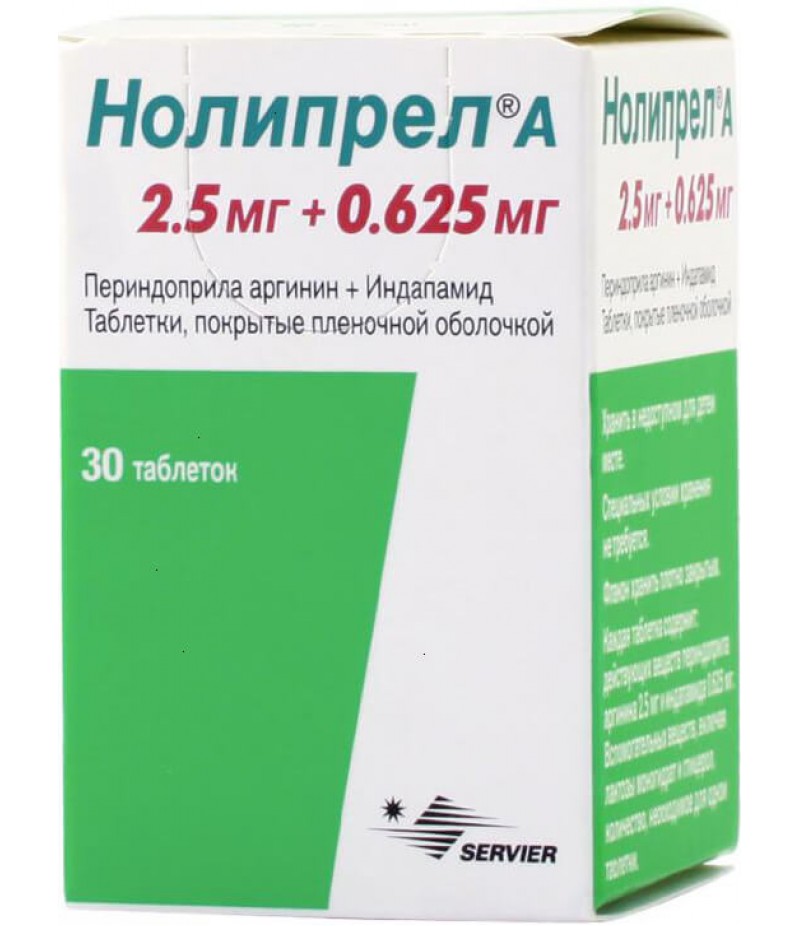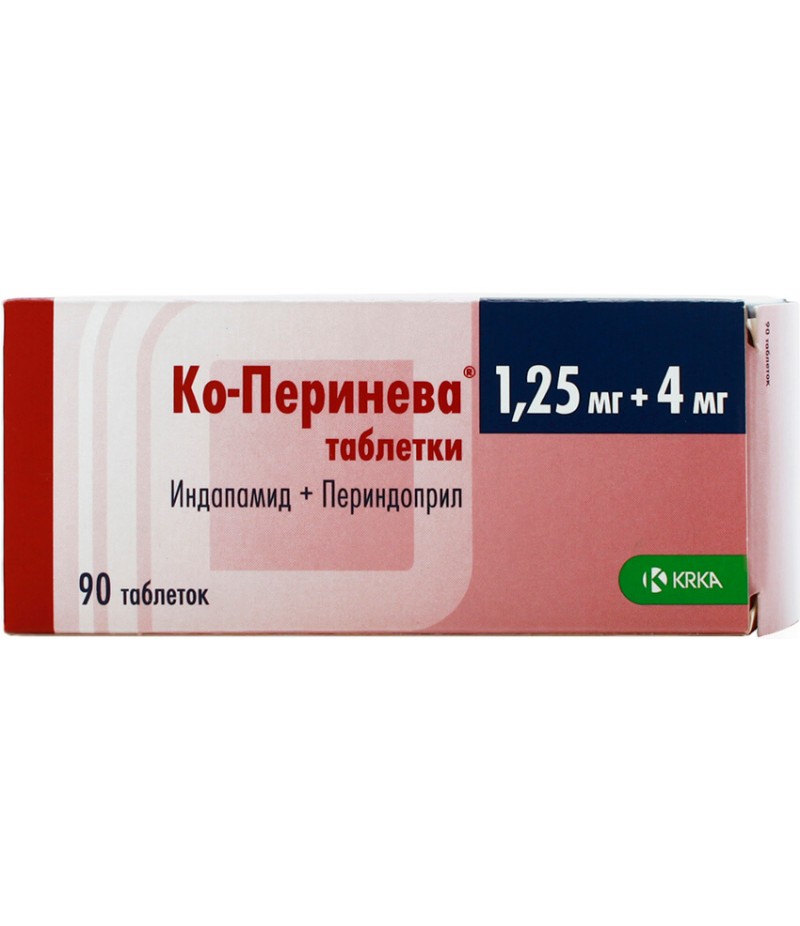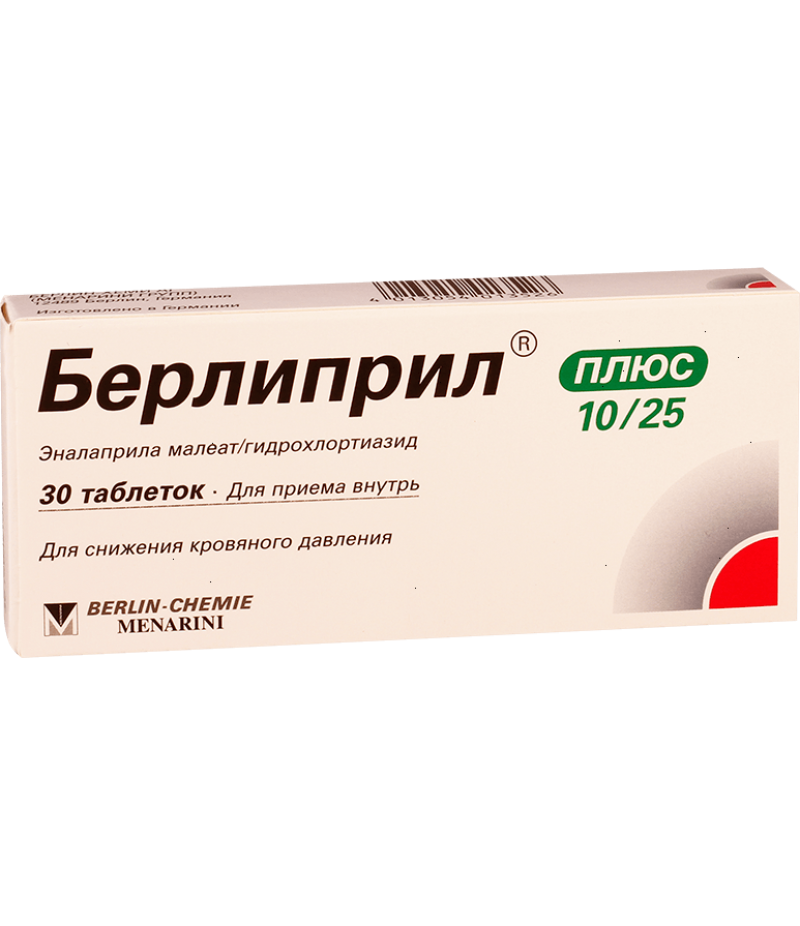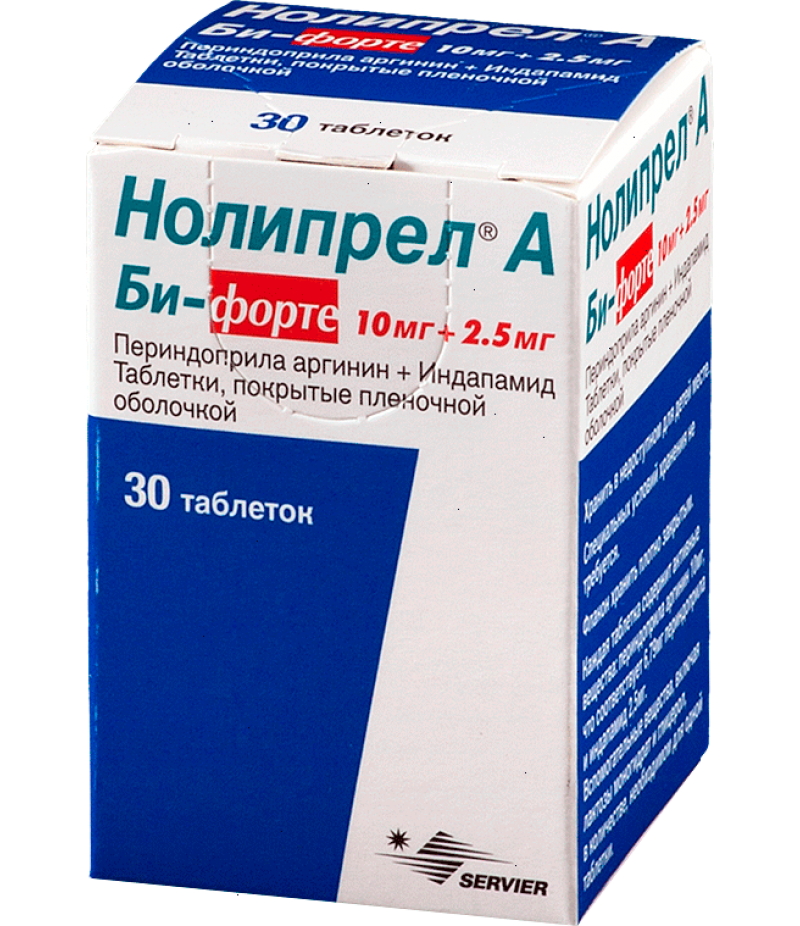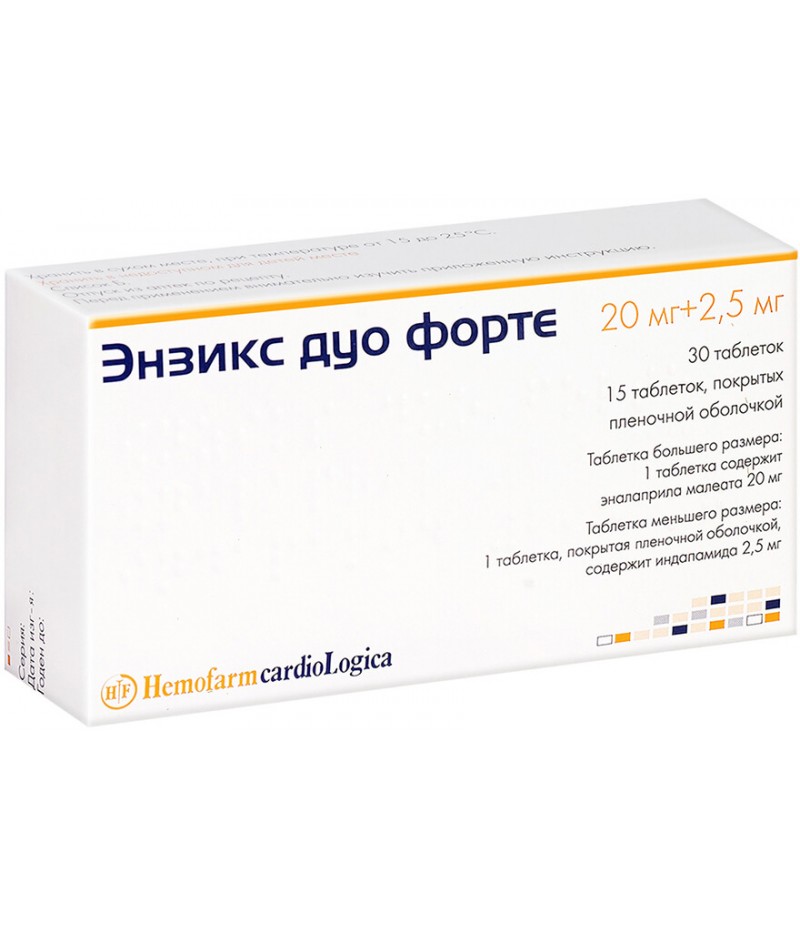Noliprel A Forte tabs 5mg + 1.25mg #30
- $31.34
- 3 or more $30.99
- Availability:In Stock
Noliprel A Forte instructionYou can buy Noliprel A Forte hereCompositionArginine 5 mg, indapamide 1.25 mg.Excipients: sodium carboxymethyl starch (type A), anhydrous colloidal silicon dioxide, lactose monohydrate, magnesium steara..
Tags: tabs
Noliprel A Forte instruction
You can buy Noliprel A Forte here
Composition
Arginine 5 mg, indapamide 1.25 mg.
Excipients: sodium carboxymethyl starch (type A), anhydrous colloidal silicon dioxide, lactose monohydrate, magnesium stearate, maltodextrin.
14 and 30 pieces per pack.
Packaging - 30 pieces
pharmachologic effect
Noliprel A forte is a combination antihypertensive drug containing perindopril (an ACE inhibitor) and indapamide (a diuretic from the group of sulfonamide derivatives). Pharmacological action Noliprel due to a combination of the individual properties of each of the components. The combination of perindopril and indapamide enhances the effect of each of them.
Noliprel A forte has a pronounced dose-dependent hypotensive effect on both systolic and diastolic blood pressure while lying and standing. The effect of the drug lasts 24 hours. Persistent clinical effect occurs less than 1 month after the start of therapy and is not accompanied by tachycardia. Discontinuation of treatment is not accompanied by the development of withdrawal syndrome.
Noliprel A forte reduces the degree of left ventricular hypertrophy, improves arterial elasticity, lowers round neck, does not affect lipid metabolism (total cholesterol, HDL, LDL, triglycerides) and does not affect carbohydrate metabolism (including in patients with diabetes mellitus).
Noliprel A forte, indications for use
Essential arterial hypertension.
Contraindications
Hypersensitivity to perindopril and other ACE inhibitors;
Hypersensitivity to indapamide and sulfonamides;
Angioedema in history (including in patients receiving ACE inhibitors);
Hypokalemia;
Renal failure severe (CC less than 30 ml / min);
Severe liver failure (including with encephalopathy);
Simultaneous use of drugs that extend the QT interval;
Pregnancy, lactation (breastfeeding).
Noliprel A forte should be used with caution in bilateral renal artery stenosis or arterial stenosis of the only functioning kidney, in renal failure, systemic connective tissue diseases (SLE, scleroderma), against the background of therapy with immunosuppressants (risk of developing neutropenia, agranulocytosis), bone marrow hematopoietic suppression, reduced OCG. diuretic intake, salt-free diet, vomiting, diarrhea, hemodialysis), with cerebrovascular diseases, renovascular hypertension, diabetes, severe heart failure (IV stage), with hyperuricemia (especially with concomitant gout and urate nephrolithiasis), while taking potassium-sparing diuretics, potassium and lithium preparations, and blood pressure lability, during hemodialysis using high-flow membranes, during desensitization, after kidney transplantation , in aortic valve stenosis / hypertrophic cardiomyopathy, in lactose insufficiency, galactosemia or glucose / galactose malabsorption syndrome, in elderly patients, in patients ntov under the age of 18 years (effectiveness and safety have been established).
Dosage and administration
Adults, including elderly patients, are prescribed 1 tablet per day, preferably in the morning.
Side effects of Noliprel A forte
Perindopril has an inhibitory effect on the system "renin-angiotensin-aldosterone" (RAAS) and reduces the excretion of potassium ions by the kidneys while taking indapamide. In 4% of patients against the background of the use of the drug Noliprel A forte hypokalemia develops (the level of potassium is less than 3.4 mmol / l).
The frequency of adverse reactions that may occur during therapy is given in the form of the following gradation: very often (> 1/10); often (> 1/100, 1/1000, 1/10000, On the part of the circulatory and lymphatic systems
Very rarely: thrombocytopenia, leukopenia / neutropenia, agranulocytosis, aplastic anemia, hemolytic anemia.
Anemia: in certain clinical situations (patients after kidney transplantation, patients on hemodialysis), ACE inhibitors can cause anemia (see the section "Special Instructions").
From the side of the central nervous system
Often: paresthesias, headache, dizziness, asthenia, vertigo. Infrequently: sleep disturbance, mood lability. Very rarely: confusion. Unspecified frequency: syncope.
On the part of the organ of vision
Often: blurred vision.
The organ of hearing
Often: tinnitus.
Cardio-vascular system
Often: pronounced decrease in blood pressure, including orthostatic hypotension. Very rarely: cardiac arrhythmias, including bradycardia, ventricular tachycardia, atrial fibrillation, as well as angina pectoris and myocardial infarction, possibly due to an excessive decrease in blood pressure in high-risk patients (see "Special instructions"). Unspecified frequency: pirouette-type arrhythmias (possibly fatal) (see section "Interaction with Other Drugs").
The respiratory system, organs of the chest and mediastinum
Often: against the background of the use of ACE inhibitors, a dry cough may occur, which persists for a long time during the taking of drugs of this group and disappears after their withdrawal. Dyspnea. Infrequently: bronchospasm. Very rarely: eosinophilic pneumonia, rhinitis.
From the digestive system
Often: dryness of the oral mucosa, nausea, vomiting, abdominal pain, epigastric pain, impaired taste perception, loss of appetite, dyspepsia, constipation, diarrhea. Very rare: angioedema, cholestatic jaundice, pancreatitis. Unspecified frequency: hepatic encephalopathy in patients with hepatic insufficiency (see sections "Contraindications" and "Special Instructions"), hepatitis.
From the skin and subcutaneous fat.
Often: skin rash, itching, maculopapular rash. Infrequently: angioedema of the face, lips, limbs, mucous membrane of the tongue, vocal folds and / or larynx; urticaria (see section "Special instructions"); hypersensitivity reactions in patients prone to broncho-obstructive and allergic reactions; purpura. Patients with an acute form of systemic lupus erythematosus may worsen the course of the disease. Very rarely: erythema multiforme, toxic epidermal necrolysis, Stevens-Johnson syndrome. Cases of the reaction of photosensitivity have been noted (see section “Special Instructions”).
From the musculoskeletal system and connective tissue
Often: muscle spasms.
On the part of the urinary system
Infrequently: renal failure. Very rare: acute renal failure.
Reproductive system
Infrequently: impotence.
General disorders and symptoms
Often: asthenia. Infrequently: increased sweating.
Laboratory values
- Hyperkalemia, often transient.
- A slight increase in the concentration of creatinine in the urine and in the blood plasma, passing after discontinuation of therapy, more often in patients with renal artery stenosis, in the treatment of arterial hypertension with diuretics and in the case of renal failure.
Rarely: hypercalcemia.
Unspecified frequency:
- Increase the QT interval on the ECG (see section "Special Instructions").
- Increasing the concentration of uric acid and glucose in the blood.
- Increased activity of "liver" enzymes.
- Hypokalemia, especially significant for patients at risk (see section "Special instructions").
- Hyponatremia and hypovolemia, leading to dehydration and orthostatic hypotension. Simultaneous hypochloremia can lead to metabolic alkalosis of compensatory nature.
(the probability and severity of this effect is low).
Side effects noted during clinical trials.
The side effects noted during the ADVANCE study are consistent with the previously established safety profile of the combination of perindopril and indapamide.
Serious adverse events were observed in some patients in the studied groups: hyperkalemia (0.1%), acute renal failure (0.1%), arterial hypotension (0.1%) and cough (0.1%).
Three patients in the perindopril / indapamide group had angioedema (versus 2 in the placebo group).
special instructions
The use of the drug Noliprel A Forte can cause a sharp decrease in blood pressure, especially when you first take the drug and during the first 2 weeks of therapy.
Interaction
Combinations not recommended for use
Lithium preparations
- With the simultaneous use of lithium preparations and ACE inhibitors, a reversible increase in the plasma concentration of lithium and the associated toxic effects may occur. The additional administration of thiazide diuretics may further increase the concentration of lithium and increase the risk of manifestations of toxicity. The simultaneous use of a combination of perindopril and indapamide with lithium preparations is not recommended. If such therapy is necessary, the lithium content in the blood plasma should be constantly monitored (see section "Special Instructions").
Drugs, the combination with which requires special attention and caution
Baclofen: may increase hypotensive action. Blood pressure and kidney function should be monitored. If necessary, dose adjustment of antihypertensive drugs is required.
Non-steroidal anti-inflammatory drugs (NSAIDs), including high doses of acetylsalicylic acid (more than 3 g / day): the use of NSAIDs can lead to a decrease in diuretic, natriuretic and antihypertensive effects. With significant fluid loss, acute renal failure may develop (due to a decrease in glomerular filtration rate). Before starting treatment with a drug, it is necessary to compensate for fluid loss and regularly monitor kidney function at the beginning of treatment.
The combination of drugs that requires attention
Tricyclic antidepressants, antipsychotics (neuroleptics):
drugs of these classes enhance the antihypertensive effect and increase the risk of orthostatic hypotension (additive effect). Corticosteroids, tetracosactide: reduced antihypertensive effect (fluid retention and sodium ions as a result of corticosteroids).
Other antihypertensive drugs: may enhance the antihypertensive effect.
Perindopril
Combinations not recommended for use
Potassium-sparing diuretics (amiloride, spironolactone, triamteren) and potassium preparations: ACE inhibitors reduce potassium loss by the kidneys caused by the diuretic. Potassium-sparing diuretics (for example, spironolactone, triamterene, amiloride), potassium preparations and potassium-containing substitutes for edible salt can lead to a significant increase in serum potassium up to a fatal outcome. If simultaneous use of an ACE inhibitor and the above drugs (in the case of confirmed hypokalemia) is necessary, care should be taken to regularly monitor the potassium content in the blood plasma and ECG parameters.
The combination of drugs that require special attention
Oral hypoglycemic agents (sulfonylurea derivatives) and insulin: The following effects have been described for captopril and enalapril. ACE inhibitors can enhance the hypoglycemic effect of insulin and sulfonylurea derivatives in patients with diabetes. The development of hypoglycemia is observed very rarely (due to an increase in glucose tolerance and a decrease in the need for insulin).
The combination of drugs that requires attention
Allopurinol, cytostatic and immunosuppressive agents, corticosteroids (for systemic use) and procainamide: simultaneous use with ACE inhibitors may be associated with an increased risk of leukopenia.
Agents for general anesthesia: the simultaneous use of ACE inhibitors and agents for general anesthesia can lead to increased antihypertensive effect.
Diuretics (thiazide and “loop”): the use of high-dose diuretics can lead to hypovolemia, and the addition to perindopril to therapy can lead to arterial hypotension.
Drugs of gold: when using ACE inhibitors, including perindopril, patients receiving intravenous gold medication (sodium aurothiomalate), a complex of symptoms was described, including: facial flushing, nausea, vomiting, hypotension.
Indapamide
The combination of drugs that require special attention
Drugs that can cause arrhythmia of the "pirouette" type: because of the risk of hypokalemia, care should be taken when using indapamide with drugs that can cause arrhythmia of the "pirouette" type, for example, with antiarrhythmic drugs (quinidine, hydroquinidine, disopyramide, amiodarone, dofetilide, ibutilid) , Bretilium tosylate, sotalol); some neuroleptics (chlorpromazine, cyamemazine, levomepromazine, thioridazine, trifluoperazin); benzamides (amisulpride, sulpiride, sultopride, tiapride);
butyrophenones (droperidol, haloperidol); other neuroleptics (pimozide); other drugs such as bepridil, cisapride, difemanil methyl sulfate, erythromycin IV, halofantrine, mizolastine, moxifloxacin, pentamidine, sparfloxacin, vincamine IV, methadone, astemizole, terfenadine. Concurrent use with the above preparations should be avoided; the risk of hypokalemia, if necessary, carry out its correction; monitor the QT interval.
Drugs that can cause hypokalemia: amphotericin B (w / w), gluco- and mineralocorticosteroids (for systemic use), tetracosactide, laxatives that stimulate intestinal motility: an increased risk of hypokalemia (additive effect). It is necessary to control the content of potassium in the blood plasma, if necessary - its correction. Particular attention should be paid to patients simultaneously receiving cardiac glycosides. Laxatives that do not stimulate intestinal motility should be used.
Cardiac glycosides: hypokalemia enhances the toxic effect of cardiac glycosides. With simultaneous use of indapamide and cardiac glycosides should be monitored for the content of potassium in the blood plasma and ECG indicators and, if necessary, adjust therapy.
The combination of drugs that requires attention
Metformin: functional renal failure, which can occur during diuretic administration, especially “loop”, while the appointment of metformin increases the risk of developing lactic acidosis. Metformin should not be used if the concentration of creatinine in the blood plasma exceeds 15 mg / l (135 μmol / l) in men and 12 mg / l (110 μmol / l) in women.
Iodine-containing contrast agents: dehydration while taking diuretic drugs increases the risk of developing acute renal failure, especially when using high doses of iodine-containing contrast agents. Patients need to compensate for fluid loss before using iodine-containing contrast agents.
Calcium salts: with the simultaneous appointment may develop hypercalcemia due to a decrease in the excretion of calcium ions by the kidneys.
Cyclosporine: it is possible to increase the concentration of creatinine in the blood plasma without changing the concentration of cyclosporine in the blood plasma, even with normal content of water and sodium ions.
Overdose
Symptoms
The most likely symptom of an overdose is a marked reduction in blood pressure, sometimes in combination with nausea, vomiting, seizures, dizziness, drowsiness, confusion and oliguria, which can turn into anuria (as a result of hypovolemia). Electrolyte disturbances may also occur (hyponatremia, hypokalemia).
Treatment
Emergency measures are reduced to the removal of Noliprel A forte from the body: gastric lavage and / or the appointment of activated carbon, followed by the restoration of water and electrolyte balance.
With a significant decrease in blood pressure should be transferred to the patient in the "lying" with raised legs. If necessary, correct hypovolaemia (for example, intravenous infusion of 0.9% sodium chloride solution). Perindopril, the active metabolite of perindopril, can be removed from the body through dialysis.
Storage conditions
Shelf life - 3 years.
In the dark place at a temperature of no higher than 30 ° C.
Terms of sell
The prescription is not required to buy Noliprel A forte.

